Crew 201 Mission Plan 17-Dec-2018
Mars Desert Research Station
Mission Plan
Crew 201 – Misión de Exploración-1 (MEx-1)
Dec 15th – 30th, 2018
Crew Members:
Commander: Tania Robles
Executive Officer: Juan Carlos Mariscal
Crew Engineer: Cesar Serrano
Health and Safety Officer/Journalist: Genaro Grajeda
Crew Astronomer/Scientist: Federico Martínez
GreenHab Officer/Journalist: Walter Calles
Mission Plan:
MEx-1 is a Mexican initiative that seeks to encourage the interest of the general population, industry, academia, and government of Mexico about the benefits of space exploration and its applications.
This through the creation of the first Mexican program of missions in MDRS conformed by a team of astronauts and a ground support on Earth. MEx-1 is a mission that had the previous support of an aerospace doctor and specialist psychologists to evaluate the physical and mental conditions of astronauts prior to the establishment of tasks and workloads of the missions.
The general objectives of Mex-1 are:
· Integration of a national multidisciplinary team that provides necessary support to the astronauts’ activities that will be carried out before and after the mission.
· Document and generate the necessary historical information to be able to organize easily later iterations of the mission.
· Generate media impact necessary to attract and encourage the participation of children and youth in space activities in Mexico.
· Encourage students and entrepreneurs to develop business activities focused on the creation and integration of projects that benefit and/or use space or high technology resources related to space exploration.
Crew Projects:
1.
Title: The Multidimensional Fatigue Symptom Inventory
Author(s): Betel Martinez, Genaro Grajeda
Objectives: To know the psychological state and mental fatigue of the astronauts through the daily filling of the mental fatigue questionnaire.
Description: Prior to the mission, the crew of MEx-1 was evaluated psychologically as a team and individually by professional psychologists to learn about different aspects such as their personality factors, cognitive functions, physical state, group interaction, cooperation, resilience, emotional states, reaction to the solution of problems and their socio-emotional development.
During the mission, the crew will perform the daily filling of a metal fatigue test that will be delivered later to the evaluating psychologists. They, from comparing the results with the scheduling and recording of the daily activities, will know the affectations and changes that occurred during the mission in each of the profiles of the astronauts.
Rationale: Crews of astronauts are previously evaluated psychologically multiple times to know if they are suitable to perform their work in space. On a trip to Mars, their profiles will be analyzed prior to the mission and from there establish the routines and daily tasks depending on their physical and mental states.
EVAs: N/A
2.
Title: Crew Wellness Experiment
Author(s): Carlos Salicrup, Genaro Grajeda
Objectives: Measure and document the crew’s weight, water consumption, and pressure variation during the mission.
Description: HSO officer will measure 3 key parameters during the same time of the morning to corroborate the wellness of crew 201. Parameters to be measured and documented are member’s weight, daily water consumption, and blood pressure.
Rationale: Good health and wellness are key to the survival of small or large missions. A healthy crew member will perform as expected by the mission standards and will continue to do so during the duration of the mission whatever it may be. With the controlled data analysis of the crew, a doctor can measure the changes over small periods of time and suggest ways to better upkeep the health of the crew.
EVAs: N/A
3.
Title: Very Small Aperture Terminal (VSAT) Pointing
Author(s): Genaro Grajeda, Federico Martínez
Objectives: Point a VSAT with 3D printed tools
Description: MEx-1 will install, point, test and validate one-way connectivity of Free-To-Air Channels from up to three geostationary satellites located within the reach of the North America region with 3D printed tools in order to experience the difficulties and hardships of intensive work during regular Martian infrastructure building missions.
Rationale: Early astronauts arriving on Mars will need to install infrastructure to sustain early Martian colony activities and operations. Through the testing of 3D printed tools and analog space suits, the process of antenna installation, pointing and other equipment will be a difficult experience. Using this test bed, it will be possible to develop modern tools, and activities to facilitate the astronaut experience in Mars.
EVAs: 4 to 5 EVAs; will be performed over the height of the HAB simulating the classical way of infrastructure installation on Earth for a large coverage area. Location for VSAT installation must be flat and stable with no line of sight obstacles to the selected satellite(s) (Eutelsat 113WA, Eutelsat 117WA and Galaxy 15) and simulate the methodology for current infrastructure installation (Cellphone Radio Bases, regular Radio Access Networks for Internet of Things Networks with multidirectional antennas of 22 to 50 dBs).
4.
Title: 3D Printing in space exploration
Author(s): Federico Martínez
Objectives: The main objective of using 3D printing is to provide us with personalized tools for our VSat pointing project and spare parts. This experiment will provide support on the construction of a rover prototype as well, and an analysis of the Hab will be done to use this technology to provide daily use supplies.
Description: 3D printing is becoming a common and a powerful tool when a unique and made in situ hardware is needed, it gives us the advantage of reducing time and costs, and the variety and quality of materials we can use nowadays it’s becoming bigger and better every year, helping different industries on their innovative and manufacturer process.
Rationale: The transportation of cargo when talking about space exploration, have been a topic since space race has begun, and now companies and space agencies are exploring 3D printing to save cargo, sending a 3d printer and its working material instead of a full kit of tools or spare parts.
EVAs: N/A
5.
Title: Engaging space to the people
Author(s): Crew 201& Crew 187
Objectives: Generate audiovisual content that will be published to increase the awareness of the space sector and the interest of young students and professionals in space exploration from Latin America.
Description: Crew 201 will record videos and take pictures of all of the activities and actions inside the Hab and during EVAs. Then on Earth the material will be edited and used for the subsequent creation of communication channels on different platforms: video, writing and as audio.
Rationale: Some of the most important space programs and agencies have a special and noted interest in science and technology outreach of their activities and missions. This to increase the interest of the population on space activities funded by the government. By doing this, they look to achieve two main objectives: create awareness on the young generation about the possibilities of doing a satisfactory career in the STEM area focused in space, and in showing the taxpayers about the importance of their monetary contribution for space exploration.
EVAs: N/A
6.
Title: Validation of electronics architecture and communication protocols for an exploration rover
Author(s): César Serrano, Juan Carlos Mariscal
Objectives: Validate the function of electronic components in hostile (low) temperature conditions. Validate communication protocols for exploration vehicles in the Martian environment.
Description: Exploration and support vehicles are required for space missions, as well, electronics and communications components are an essential part of such vehicles, so prove and validate new technologies to assure the success of the mission must be a special point of interest in the planning and design of space vehicles.
Rationale: Communications are the base of information exchange, therefore, the electronics used for them must be reliable. In space missions, the development of more efficient, reliable and faster protocols for data transfer, as well as more powerful and smaller electronic components must be constant.
EVAs: 1 EVA. To prove the requirements of distance and computational power of communication protocols, as well as behaviour of electronic components. Required terrain: – Preferably an area with hills or medium-high rock formations.
7.
Title: Behaviour of Artificial Vision algorithms for Autonomous Navigation
Author(s): César Serrano, Juan Carlos Mariscal
Objectives: Test the quality of the images obtained by given cameras. Test the efficiency of AV algorithms and tools to identify samples of Martian rocks based on their colour and size. Test the efficiency of stereo vision to estimate distances using bidimensional images
Description: Artificial vision is currently the most important perception method and is the input for many artificial intelligence algorithms for autonomous navigation. Along with other kinds of sensors, such as ultrasonic and laser, artificial vision allows identifying objects based on their characteristics to be identified, according to their importance in navigation and mapping.
Rationale: When exploring other planets, autonomous navigation mitigates the communications delay caused for the distance to Earth. In order for a robot to be able to explore unknown terrains without being dependent of external commands or information obtained via satellite, it must be capable of recognizing and locate itself in the environment, reason why efficient methods for getting and processing images are fundamental. The AV algorithm is part of the development of an exploration rover.
EVAs: 1 EVA. Required terrain: Area with high rock formations, different colour tones of the ground and medium-sized rocks.
8.
Title: Prototype and mechanical testing of Exploration rover
Author(s): César Serrano, Juan Carlos Mariscal
Objectives: Prove the expected behave of the mechanical systems of the Rover.
Description: Since 2012 it has been creating a big Project related to the design and building of space robotics exploration. Today, there exists the experience and expertise of developing Low-Cost RoThe last built prototypes have been related in mining and sampling return. Taking into count this scope, in MEx-1 will validate the function and evaluate the behavior of the mechanisms studied and implemented in our robotic solution. The details of geometry, suspension system, motor housings, wheels, leveling, and assembly were taking into count for the preparation of the preliminary and future designs of this kind of robotic.
Rationale: The developing of an exploration Rover, such as Curiosity and Opportunity, is focused perfectly in the study of the red planet, due to, having a technology of this type helping the astronaut, will provide further risky places, collecting useful data for the understanding of the planet, and futures missions in the planet.
EVAs: 1 EVA. Required terrain: A flat place, with transitions of lightly rocky floor and hard into a muddy one and vice versa.
9.
Title: Martian Soil Analysis for usage on Greenhab
Author(s): Walter Calles, Makiah Eustice (Crew 200)
Objectives: Explore, collect and analyze multiple soil samples on the Martian soil on MDRS to test their capability for plants seeding and growing on the Greenhab. Up to 5 different soil samples will be mixed with different combinations of organic material to see which can be used as Greenhab ground.
Description: As part of the Greenhab activities, we’ll explore multiple locations with different types of soil during the EVAs. We will collect up to 5 different soil samples to test their attributes for plants seeding and growing. By mixing those samples with different amounts of Greenhab soil and some organic material, we’ll try to grow different types of crops on the multiple types of soil. After 5 days of continuous monitoring of the samples, we’ll determine which combination(s) of soil and organic material present the best results. Those samples will be taken to the science dome and analyzed in order to characterize their properties. Every location where the samples were collected will be marked on the MDRS map and marked as fertile or not.
Rationale: The idea of using real Martian soil for seeding and growing purposes is something that could be seen as a huge milestone to ensure future sustainable long-duration missions on Mars. Even though Earth’s soil samples are very different from the ones found on Mars, testing new ways to mix Martian-like desert samples can give a good overview of future next steps for Martian exploration.
EVAs: 1 EVA long enough to reach up to 5 locations with different types of soil samples for recollection.


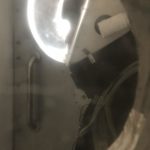
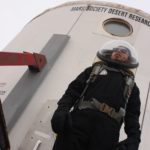
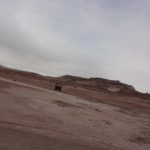
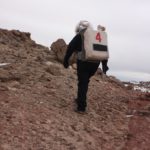
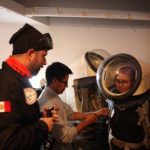
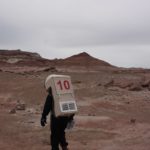
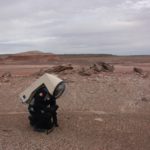

You must be logged in to post a comment.